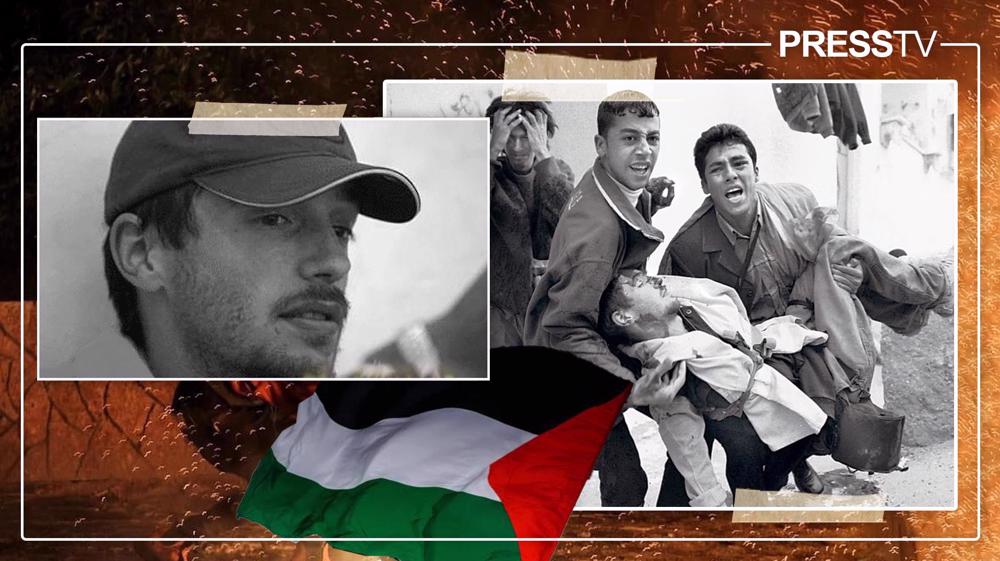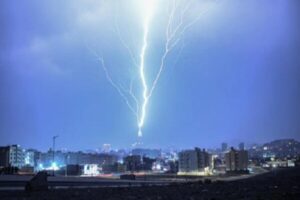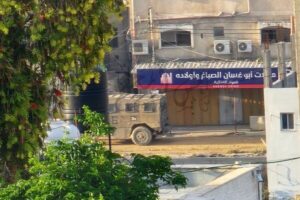By Ivan Kesic
This week marks 20 years since the diabolic murder of Tom Hurndall, a British photographer and pro-Palestine activist, who was shot in the head by an Israeli sniper in the Gaza Strip when he tried to save Palestinian children from gunfire.
The incident took place on April 11, 2003, when an Israeli sniper shot Hurndall in the head, leaving him in a coma. After nine months, on January 13, 2004, he breathed his last.
His mother Jocelyn Hurndall wrote about the Israeli regime’s crime in a book titled Defy the Stars: The Life and Tragic Death of Tom Hurndall, published in April 2007, which was later reprinted.
Born in London, Hurndall was educated at Winchester College in Hampshire and studied photography at Manchester Metropolitan University.
In early 2003, when he was 21 years old, he took a working break from his degree course and joined a human rights movement that sought to prevent the American-British military invasion of Iraq.
When the war became inevitable, Turndall moved to Jordan, where he helped Iraqi refugees in the country in different ways, including financial help.
His journals and photographs record the harrowing and sometimes inspiring moments he witnessed during his time in Iraq, a refugee camp in Jordan, and later in the Gaza Strip.
During his stay in Jordan, he became interested in Palestine and joined the International Solidarity Movement (ISM), an organization for nonviolent protest against the Israeli occupation.
Activism on Palestine
In early April 2003, Hurndall moved to Rafah, a Palestinian city in the southern Gaza Strip, to document the plight of Palestinians. The area was then under direct Israeli military occupation.
Hurndall was visibly shocked by the Palestinian situation, as evidenced by his journal entries, as well as by photos of the occupying forces he regularly sent to his family.
“What do I want from this life? What makes you happy is not enough. (…) I want to be proud of myself. I want more. I want to look up to myself and when I die, I want to smile because of the things I have done, not cry for the things I haven’t done”, he wrote in one of his journal posts.
The British activist also wrote about the murder of Rachel Corrie, a 23-year-old activist who had been crushed to death by an Israeli bulldozer three weeks earlier when she tried to save a Palestinian home from destruction, wondering how many people would even hear about her sacrifice.
Just five days after arriving in Rafah, on April 11, Hurndall and his ISM colleagues set out on Rafah road to set up a peace tent and prevent Israeli tank patrols.
ON JANUARY 13, 2001, ISRAELI FORCES KILLED BRITISH PRO-PALESTINIAN ACTIVIST
Tom Hurndall, a British photography student and anti-occupation activist was killed by Israeli snipers in the Gaza Strip. pic.twitter.com/cawqmtmxCv
— Press TV (@PressTV) January 13, 2022
Brutal attack on Hurndall
On the way to their destination, Hurndall and his colleagues were suddenly and without any plausible reason attacked by the army of the Israeli regime, after which they quickly ran for cover.
One of them in the line of fire spotted a group of Palestinian children, some of whom took cover in time, but three stood paralyzed with fear.
Hurndall reacted bravely and quickly, running to the place where the children were exposed to the Israeli fire, picking up the girl and carrying her to cover.
When he tried the same with another child, he was hit in the head by an Israeli sniper’s bullet and was left bleeding on the road.
The young man was shot deliberately. There were no clashes in the area and he was wearing a clearly visible bright orange vest for international volunteers, the same as Corrie wore a few weeks earlier.
ISM activists reported that an ambulance arrived immediately after the incident, about two minutes after the shooting, but was then stopped by the Israeli troops for up to two hours.
Hurndall was then taken to the Palestinian hospital in Rafah, where doctors declared him clinically dead.
Israeli cover-ups
After it became known that the man was a British citizen, the Israeli regime declared the case an incident and took him to a hospital in Beersheba, where he was kept on a ventilator and underwent surgery.
A month and a half later, he was transferred to the Royal Hospital in London, where he remained in a persistent vegetative state for nine months.
Suffering from irreversible brain damage, he died on January 13, 2004, after nine months in a coma.
Then-British Foreign Secretary Jack Straw demanded a quick and clear investigation into the incident, but the Israeli regime in a classic way pushed the matter under the carpet.
In the first testimony, the sniper in charge claimed that Hurndall was wearing camouflaged military clothing, which photographic evidence and ISM activists disputed as a lie.
Contradicting the first claims of a “masked militant”, the sniper later changed his story and claimed that he had not intended to shoot Hurndall but to deter him, aiming 10 centimeters from his head, but was “accidentally hit because he moved.”
Israeli forensic pathologists tried other incoherent excuses, claiming that Hurndall did not die from a bullet wound but from morphine given at a Palestinian hospital, which investigators rejected.
Mockery of justice
Eventually, to pacify London, the sniper was convicted but was sentenced to only eight years in prison.
He served even less, only six years, after which he was released because he allegedly “didn’t pose a danger,” much to the dismay of Hurndall’s family, who were not even informed.
In the following years, Hurndall’s mother published a biography about his life and death, and his sister engaged in humanitarian work for Medical Aid for Palestinians.
Raphael Cohen, a human rights activist who was with Hurndall on the day that he was shot, explained that they went to protest because just a few days earlier, two children who were playing in front of their houses had been shot dead.
There has never been any investigation into the fatal shootings of those Palestinian children.




